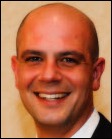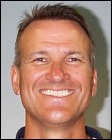Readers Write: All Vendors Exit Stage Left
All Vendors Exit Stage Left
By Frank Poggio

Stage 1 product certifications end this year — September 30 for Inpatient products and December 31 for Ambulatory. In many of my conversations with systems suppliers who are considering the next step in ONC Certification, they refer to it as “Stage 2 Certification.” I can’t blame them. I’ve done it myself.
Remember, it all started with Stage 1 two years ago, so naturally you would expect Stage 2 to follow Stage 1. But with the feds and ONC, it could never be that simple.
When ONC issued the final Stage 2 rules last year, they made a very purposeful and distinct break between Stage 2 Meaningful Use and the vendor test criteria. Instead of referring to “Stage 2 Test Criteria,” they labeled them the 2014 Edition Test Criteria. Providers are subject to Meaningful Use Stage 2 rules, while vendors seeking certification come under the 2014 Edition of Test Criteria. There are real differences — some pretty big ones.
What I usually see is a software firm starts by carefully reviewing the provider MU Stage 2 attestation criteria since they are all over the Web. Next, they try to translate the MU list to product test criteria. Then confusion follows.
Although the MU attestation criteria for Stage 2 resembles the Certification test criteria, there are differences. For example, one big difference is a provider needs to attest to about 25 MU criteria and some Quality Measures to get the Stage 2 money. But you as a vendor need to pass on about 40 certification test criteria and nine QMS elements to become 2014 Edition Certified.
Another example: under Stage 2, a provider would attest to completing a HIPAA compliance risk analysis. That’s just one question (the answer is ‘yes’, subject to audit, of course). But for a vendor completing a certification test under the 2014 Edition, you address eight very specific tests for privacy and security.
ONC now refers to your Stage 1 certification as the “2011 Edition Test Criteria.” No more Stage 1.
A related question ties back to what I said at the top of this piece. Your current Stage 1 certification ends this year. Actually, ONC says your 2011 Edition certification ends and you must test out on the new 2014 Edition to continue to sell certified software.
As of this week, only four vendors have been successful in achieving 2014 Edition Full EHR Inpatient Certifications. Under Stage 1, there were dozens. The 2014 testing is turning out to be a real challenge for many vendors, far more difficult than I think ONC expected.
Some think ONC will extend the Stage 1 vendor certifications if they do not get enough vendors through 2104 Tests by September. That would seem a likely solution. But given Dr. M’s pointed comments about vendors “gaming the system,” I doubt it.
The reason they made the breaks between certification test criteria and MU attestation criteria is that when they decided to extend Stage 1 of provider attestation into 2014 (originally it was to die in 2013) they did not want to extent the vendor certifications as well. Why? I guess they just wanted to keep your feet to the fire.
Which raises the next question. How can a provider attest to Stage 1 in 2014 when all the vendor certifications for Stage 1 die in three or six months? Simple. ONC now allows the provider to MU attest under Stage1 using a 2014 Certified system. If you have clients or prospects that have not attested to Stage 1 and plan to do so in 2014, they must be running your 2014 Edition certified software for at least 90 days in 2014.
It seems that ONC has taken vendors off the Stage, and reduced them to simply an old Edition.
Frank Poggio is president of The Kelzon Group.
















Hard agree, and not just because I'm a spreadsheet nerd. Why are we all here? Isn't it in the service…